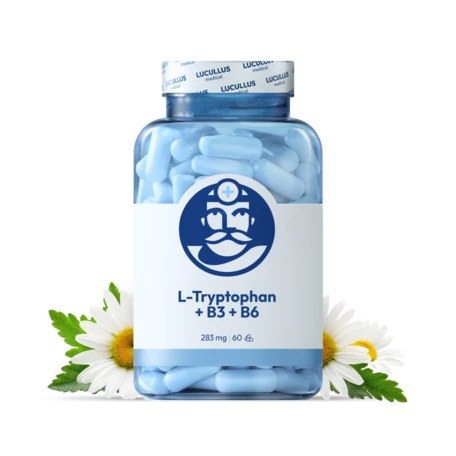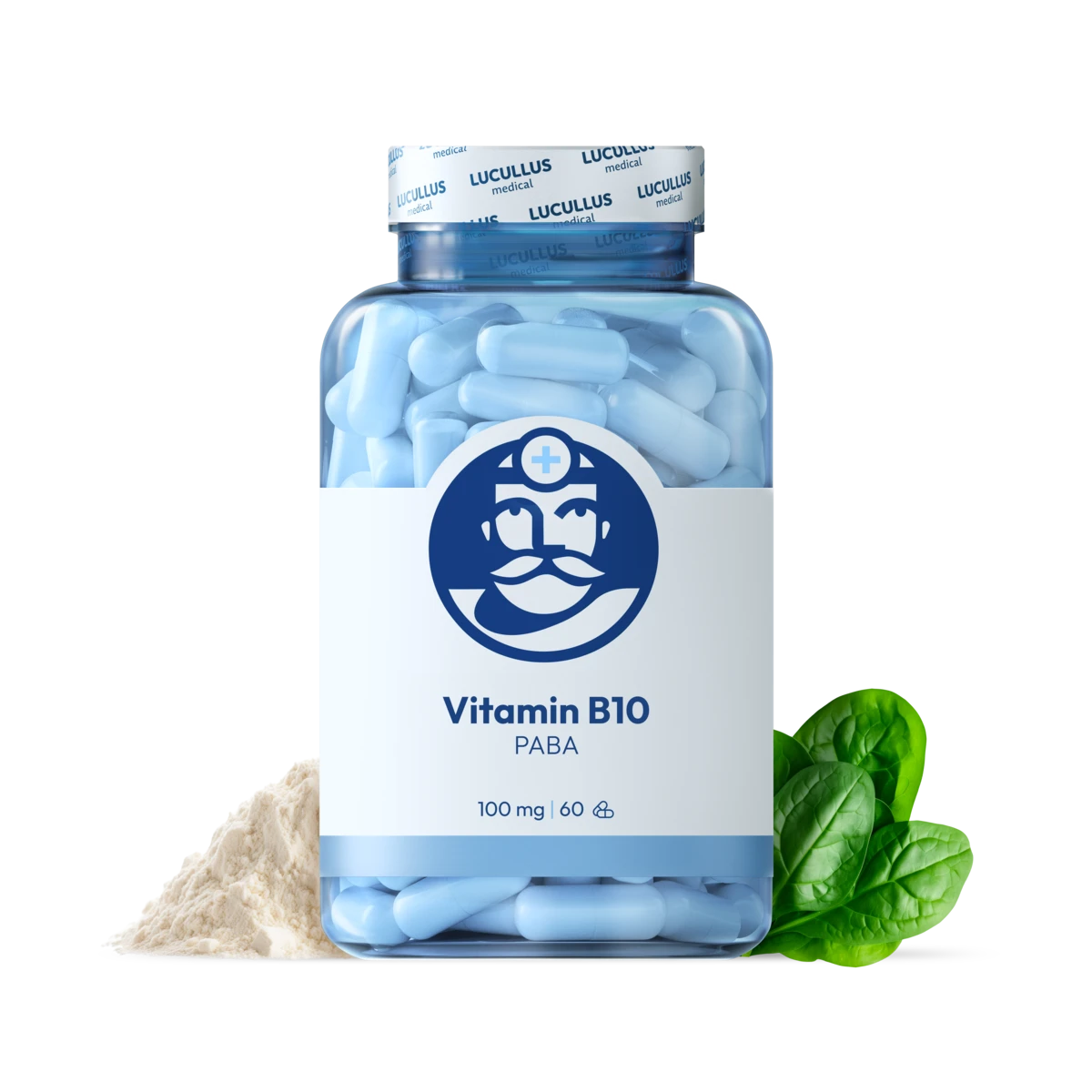
Účinky
Improved mood and serotonin productionIncreased sleep qualityReduction of stress and relaxationComprehensive support for the nervous systemNutritional balance and vitality
Pack of 60 capsules
| Active ingredient | In daily dose | % Ref |
|---|---|---|
| Vitamin B10 (para-aminobenzoic acid) | 100 mg | - |
Ingredients: Vitamin B10 (para-aminobenzoic acid), bulking agent: microcrystalline cellulose, magnesium stearate, capsule made of gelatin.

Read the latest news about quality dietary supplements, vitamins, immunity, and health.

Probably everyone who has watched the great series Chernobyl remembers the scene where the main female protagonist is handing iodine tablets to the secretary in the office of the Belarusian ministry, who, by the way, says she is pregnant. Iodine is a chemical element that our body needs for the thyroid gland to function properly. And anyone who has thyroid issues knows how much it influences in the body. It is truly incredible how intricately our bodies are assembled and what is required to ensure you are healthy and functional.

In today's age of daily stress, it's increasingly important to supply the body with the power of nature. Male vitality is a supplement from the most effective plants. A uniquely created formula tailored to the needs of the modern man and his active lifestyle. For more energy and increased performance at work and beyond, so you can fully experience all the adventures waiting for you.

Tribulus terrestris is a small unobtrusive plant with yellow flowers, essentially a weed that has spread from China and Japan all over the world. Today it is even cultivated in gardens for its effects on the human body. It is recognized by Ayurveda and ancient Greek medicine. Abroad, it is known by names such as: goat's head, devil's thorn, burra gokharu, and in Ayurveda as gokshura. It has been used for centuries as a miraculous remedy for infertility, impotence, and erectile dysfunction. It is simply a testosterone booster!

For ages, people have been trying to find miraculous herbs and mushrooms that would enhance health, cure deadly diseases, and boost male potency. Each culture has its proven aphrodisiacs. Here, oysters or chocolate are especially well-known. Recently, especially with the development of tourism, we gradually also learn about other invigorating means that people use often on the opposite side of the planet. One of the oldest substances for potency support is Maca Peruvian Watercress.

In a natural supplement is hidden a less known plant hairy yam (Discorea villosa, Wild yam) from the family Dioscoreaceae. Let's get to know it ☺ There are more than 600 species of yam plants, the most notable species is wild yam (Dioscorea villosa). This perennial, low-maintenance vine (grape), of equatorial regions has heart-shaped leaves. The leaves and root contain diosgenin (the primary component), the root is used in medicine and in our supplements, as a concentrated extract (the highest yield), it is structurally similar to cholesterol. This substance was used to make the first contraceptive pills.

Vitamin B1 belongs to the group of vitamins B1 to B12, which we refer to as B-complex. Under this name, it is possible to buy a vitamin supplement containing all the important vitamins of this group. But what if I only need one of them? Fortunately, you don't have to take the whole group - the most important vitamins from the B group can be obtained separately today.